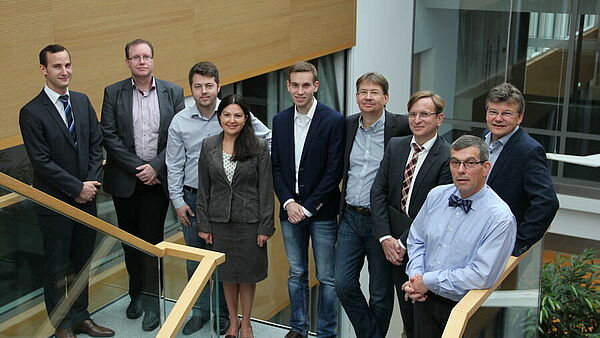Everybody knows it: Paying via cash card, internet or smartphone. Digitalization is advancing continuously. But the most popular method of payment remains cash money that is viewed as trustworthy, anonym and authentic and is accepted worldwide. But will we still be paying with cash money in the future? Industrial information technologies and safety aspects play an increasing role in the context of “digital transformation” that also concerns the production of banknotes. In the research project “smartBN” project partners want to develop a completely new banknote that has the potential to revolutionize the word’s payment process. “It is our goal to realize an intelligent banknote – inspired by Industry 4.0 concepts- that is able to communicate with the environment of pay terminals while at the same time remaining anonymous and safe”, so Prof. Volker Lohweg, project manager and board member of inIT. This is to be achieved on the one hand by the use of new materials in production process and by new algorithms on the other hand that provide banknotes with a (partially) active local intelligence. “Chemical substances are applied to the banknotes that are optically modifiable and that can be used as a memory”, explains Prof. Hans-Jürgen Danneel from ILT.NRW. The banknote can absorb and release information. “This approach goes into a whole different direction than hitherto”, so Lohweg. Consumers and ATMs can directly use the banknote for a confirmation about its authenticity. The new approach could also be used for other security papers like checks, tickets, coupons or packages.
In cooperation with ILT.NRW Industry 4.0 concepts are brought together with know-how from life-sciences. Together with industry partners Koenig & Bauer (KBA) and Diebold Nixdorf hard and soft sensors and activation systems shall be brought together. “The institutes inIT and ILT.NRW jointly do research on completely new sensorial and photonic approaches. Also new optical detectors shall be realized. We are confident that the smart banknote will prevail in payment transactions in the future”, so Lohweg who counts on the collaboration with Prof. Michael Hübner from Ruhr-University Bochum.
The annual provision costs for banknote circulation (from production to destruction) amount to 90 billion Euros in Europe alone.
“A innovation leap in this process chain would be the realization of a smart banknote that is safer than before and extends its life chain. Alternative eMoney-payment systems currently could not replace banknote characteristics”, so Lohweg. Also ECB recommends the use of cash.
About smartBN:
Project partners involved are: Institute Industrial IT (inIT) and Institute for Food Technology (ILT.NRW) of OWL University, Koenig & Bauer AG with subsidiary KBA-NotaSys Lausamme, Dibold Nixdorf AG and Ruhr University Bochum (Chair: Embedded Systems of Information Technology). The project is funded by BMBF with about 800,000€ for 3 years. This innovative research approach investigates and develops sensorial detection, activation and authentication approaches as well as physico-chemical approaches for age determination and coding. Institute Industrial IT (inIT) is domiciled at research and development center CENTRUM INDUSTRIAL IT (CIIT).


